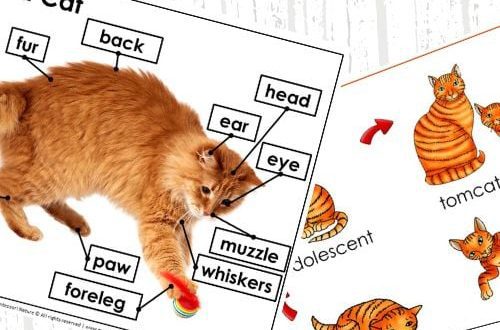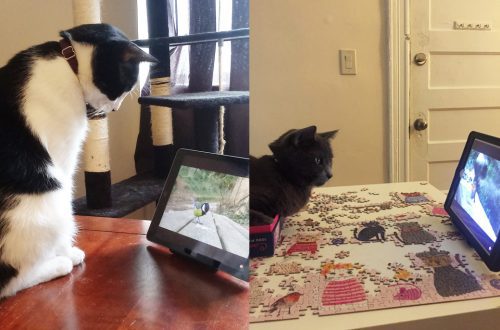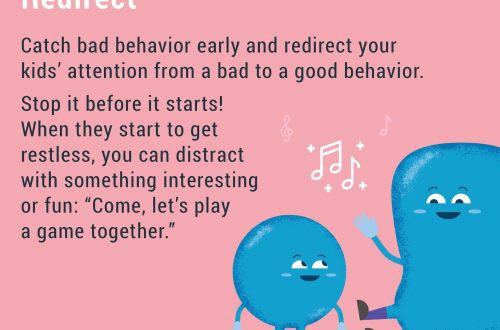
Elderly cat care
Cats have been living with humans for hundreds of years. More and more these freedom-loving animals lead a sedentary life, do not go out into the street. Cats have become full-fledged members of families. Their life expectancy can reach twenty or more years. Age-related changes in cats begin individually, it is believed that from about 7 years old, and clear and vivid signs of aging become more noticeable after 12-15 years. How to understand an elderly cat and make her life better – we will consider in this article.
Contents
Signs of aging
Each cat has its own transition to adulthood. But still there are the most common signs of aging.
- Decreased activity, the cat prefers to sleep more.
- Changing the time and duration of sleep and wakefulness, the cat can sleep all day and wander around at night.
- Overweight or underweight.
- Problems with the joints, the gait is not springy, the vertebrae on the back may protrude, even with excess weight.
- Deterioration in the quality of the coat: the coat is tattered, dull, thin, greasy or too dry, tangles can form even on short-haired cats.
- The cat takes care of itself less often: washes, sharpens its claws.
- Deterioration of vision, hearing, smell.
Cognitive decline and behavioral change
- Disorientation in space, forgets where the feeder and toilet are, may go to the toilet in the wrong place.
- Decreased memory, forgetting his name or reacting slowly, simple things can be confusing – for example, a cat cannot remember how to get through the door, or is frightened by a long-familiar object.
- Decrease in purposeful actions and aimless wandering around the apartment, sometimes even in a circle within the same room.
- Change of character – can become irritable, aggressive, or vice versa – too affectionate and striving for contact.
- Excessive vocalization – can meow for no particular reason, after performing any actions (eat, go to the toilet, wake up), or meow, lost in empty rooms and corridors, especially at night.
To accurately determine the cause of a change in behavior in a cat, it is necessary to fully examine it. Sometimes behavioral symptoms caused by a disease are written off as cognitive dysfunction syndrome: in old age, all chronic diseases can worsen, and new ones can arise. You need to carefully monitor the pet and its condition.
Feeding
Cats develop special needs as they age. The body is not getting younger and it needs support. Most often, with age, cats suffer from the urinary, digestive, cardiovascular systems, skin and coat. Feeding must be balanced. Phosphorus content must be optimally reduced in the diet to maintain kidney health. Essential fats and amino acids must also be included in the diet. For example, tryptophan stimulates the cat’s cognitive functions. A plus will be the presence in the feed of chondroprotectors, antioxidants, for example, glucosamine and vitamin C. They are needed for the tone of the musculoskeletal system. Ingredients that are well digested are very important, as the digestive system may no longer work like clockwork. It is necessary to fully saturate the body with moisture, and if the cat drinks little, in addition to dry food, wet food in the form of spiders or pates may be present in the diet. Feeding wet food in mono mode is also suitable for animals whose food intake is difficult due to diseases, including the oral cavity. Some manufacturers offer food in the form of crunchy pads with soft contents that are easy to chew, such as Royal Canin Aging 12+. Almost all food manufacturers have special lines for older cats. If there are chronic diseases, then veterinary diets may be required. We recommend that you consult with your doctor.
Nutritional supplements and vitamins
In addition to a quality diet, the need for vitamins, minerals, prebiotics and other beneficial substances increases. Special complexes designed for older cats have been developed, for example, Farmavit Neo vitamins for cats over 8 years old and others. You can also give vitamins in drops or as a paste, like Gimcat Multi-Vitamin-Extra for those who refuse to eat tablets. As a rule, they have a high content of antioxidants, chondroprotectors, amino acids.
Skin and coat care
Pay attention to your pet’s claws, with age they become thicker and rougher. It is not always possible for a cat to grind them successfully. Help your pet with a special nail cutter, which will help to avoid ingrown claws into the paw pads. Wash the coat with moisturizing mild shampoos. If the cat does not like to bathe, then a no-rinse shampoo can be an alternative, such as Ms. Kiss, 8in1 Perfect Coat shampoo spray, Bio-groom Klean Kitty Waterless, or powder shampoos. Comb your pet with special combs: a slicker comb, a metal comb, a rubber mitt, use a mat cutter if necessary.
Cat games
Try to entertain the cat, stimulate its mental and physical activity. Balls, teasers, toys with noise effects and catnip, game tracks, puzzle balls with holes for treats are ideal helpers for this.
Preventive procedures
Do not forget about the examination of the pet for the prevention of diseases:
- Donate blood every 6-12 months for a general clinical and biochemical analysis.
- General urinalysis every 3 months.
- Ultrasound of the abdominal cavity 1 time per year.
- Treatments for ectoparasites (fleas, ticks) regularly.
- Treatments for helminths (worms) 3-4 times a year.
- Vaccination annually.
Take care of your pets, provide them with comfort, peace and good food, and, of course, love them! Health to you and your pets!





